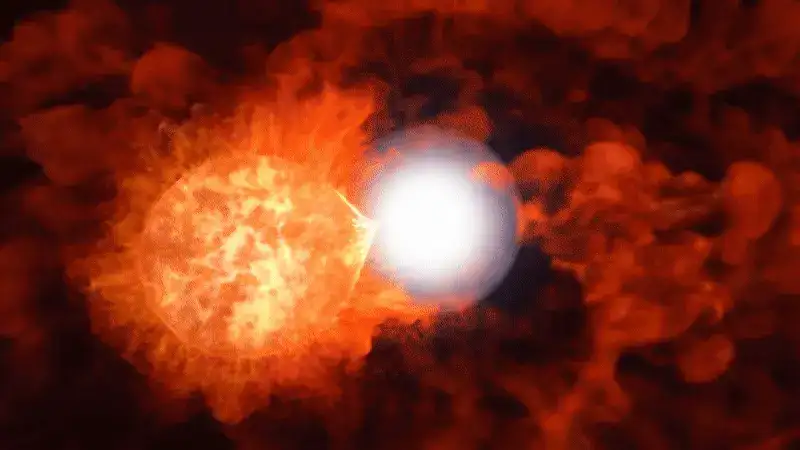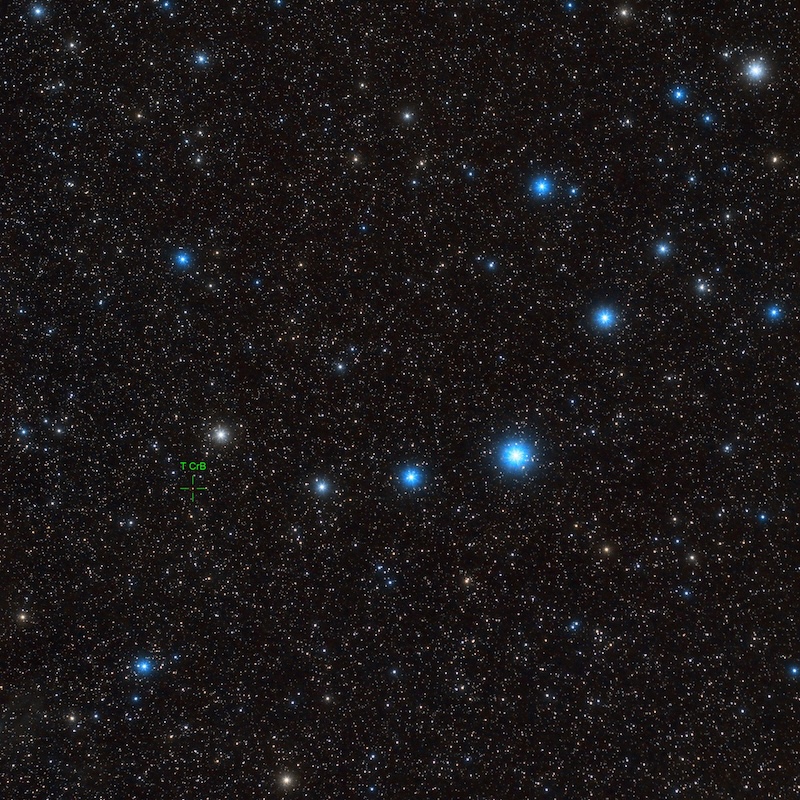Astronomers are holding their breath: a new star in the T Coronae Borealis system (T CrB), also known as the Blaze Star, may be about to erupt in the night sky. This rare phenomenon repeats every 79 years, and the latest calculations point to a likely explosion on March 27. If the forecast comes true, we will see a brief but spectacular flare that will shine like a new star for almost a week.

When to expect an explosion?
T CrB is a binary system 3000 light-years from Earth, consisting of a white dwarf and a red giant. The latter slowly loses hydrogen to the moon’s gravity, forming an accretion disk around it. When enough material accumulates, a thermonuclear explosion occurs that scatters the matter into space. Unlike ordinary supernovae, the white dwarf remains unharmed, but the flare is so bright that it will be visible even to the naked eye.

Jean Schneider of the Paris Observatory analyzed the dates of past explosions and the orbital dynamics of the system (the rotation period is 227 days). He found that flares occurred every 128 orbits, corresponding to March 27, 2025. If the forecast doesn’t work, the backup dates are November 10, 2025 and June 25, 2026. However, Schneider notes: his method is based on math, not process physics, so accuracy remains in question.
How to observe the phenomenon?

Now T CrB has a stellar magnitude of +10, and therefore, it is invisible without a telescope. However, after the explosion, its brightness will increase to +2 – like Polaris. A better view awaits residents of the Northern Hemisphere. The flare will be visible for a few days, after which the star will begin to fade, and the next chance will occur only 80 years later.
Cosmic spectacle
The first recorded explosion of T CrB occurred over 800 years ago. Since then, the cycle has repeated steadily, making this system unique among recurring supernovae. The current window of opportunity opened in February, and amateur astronomers are already watching the skies in anticipation of the brilliance of the new one.

It’s not just a spectacle. The study of T CrB helps us understand the evolution of binary stars and the mechanisms of thermonuclear explosions in the Universe. Even if the date shifts, the expectation is a reminder: the cosmos is full of wonders that sometimes appear right above our heads. Get ready to look up – history could happen at any moment!
We have previously explained why the mysterious star T CrB has not erupted yet.
According to earthsky.org


